Posted on
August 02, 2018 by
Ashley Andrews
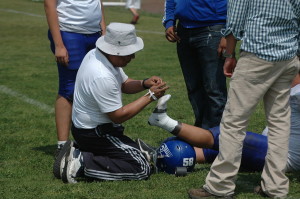 Sports provide numerous benefits, from teamwork to dedication to improving fitness. They can also, however, be dangerous. It is important to understand how to protect yourself from the dangers of sports and how to prevent injuries. If injuries do occur, knowing how best to treat them is the key to a quick recovery.
Sports provide numerous benefits, from teamwork to dedication to improving fitness. They can also, however, be dangerous. It is important to understand how to protect yourself from the dangers of sports and how to prevent injuries. If injuries do occur, knowing how best to treat them is the key to a quick recovery.
Knee Injuries
Most sports can cause a knee injury if people aren’t careful. Stretching is one of the best ways to prevent this type of injury. Perform a quad stretch by grabbing your ankle and pull your leg behind your body. This will stretch out your knees and quadriceps. A simple toe touch will suffice as well.
An ACL injury is one of the most common injuries, often happening during games like soccer and football where legwork is important. A knee replacement surgery may the final option if rehabilitation and pain medication do not work. Look at total knee replacement pictures and you’ll see the difference between a knee that needs replacement and one that has been replaced. Read the rest of this entry →
Tags: knee injurySports Injuries
Category
Health & Fitness, Sports Medicine
Posted on
August 01, 2018 by
Joe Fleming
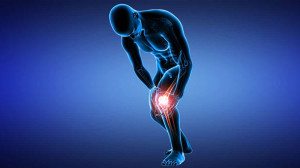 Tendonitis of the knee (also known as patellar tendonitis or “jumper’s knee”) is a highly common injury among athletes.
Tendonitis of the knee (also known as patellar tendonitis or “jumper’s knee”) is a highly common injury among athletes.
Several well-known professionals — including third baseman Brandon Inge, pitcher Oliver Perez, and tennis player Rafael Nadal — have all struggled with chronic cases of patellar tendonitis throughout their careers.
Because tendonitis of the knee is common and comes on gradually, many athletes assume that they don’t need to take their recovery from it as seriously as they would need to take a more acute injury like an ACL tear. In reality, though, chronic tendonitis can be incredibly debilitating and could potentially sideline an athlete completely.
Read on to learn about some of the most common mistakes athletes make when trying to manage their tendonitis and what you should be doing instead.
What is Patellar Tendonitis?
Many athletes suffer from patellar tendonitis without even knowing exactly what it is. Patellar tendonitis occurs when the tendon that connects the tibia (shin bone) and patella (knee cap) becomes irritated and inflamed.
Patellar tendonitis most often results from repetitive knee strain. This repetitive strain creates several small tears in the tendon. Over time, these tears weaken the tendon and cause it to become inflamed.
Some of the most common issues that contribute to patellar tendonitis include:
Symptoms of patellar tendonitis often come on gradually and usually aren’t noticeable right away. When they do start to notice symptoms, most people report experiencing some pain and tenderness around their kneecap, especially when they’re getting down into or standing up from a squatting position. Some also notice swelling and a burning sensation.
These symptoms are usually sporadic at first and get worse and last longer as the tendon undergoes more stress and damage. Read the rest of this entry →
Tags: Patellar tendon
Category
Health & Fitness, Sports Medicine
Posted on
June 28, 2018 by
Dixie Somers
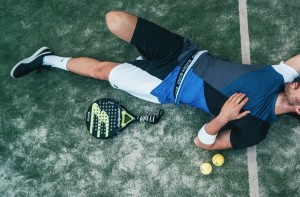 Whenever you play a sport or exercise your body, you are increasing your risk for injury no matter how careful you are. However, by following safe steps, knowing your body’s limitations and protecting against the most common types of injuries, you can stay safe and stay in the game. Here are four simple ways that you can avoid stressing any part of your body or landing in the emergency room rather than being on the field.
Whenever you play a sport or exercise your body, you are increasing your risk for injury no matter how careful you are. However, by following safe steps, knowing your body’s limitations and protecting against the most common types of injuries, you can stay safe and stay in the game. Here are four simple ways that you can avoid stressing any part of your body or landing in the emergency room rather than being on the field.
Always Warm Up and Cool Down
Warm ups and cool downs often seem pointless to new exercisers or players. Most people want to immediately get to the good part, which is the game or exercise itself. However, warm ups and cool downs, which should last for the first five and last five minutes of every game respectively, are vital for protecting muscles and connective tissues from strain and injury. A good warm up will bring blood into the muscles that you plan to use while a cool down should return your heart rate and breathing to normal.
Wear Protective Gear
Protective gear is designed to guard the most danger-prone areas of your body from injury. For example, a helmet is used to protect your head from concussions and other brain injuries. Knee and elbow pads protect your joints that tend to stick out the most from your body. Other good forms of protective gear depending on the sport include mouthguards, shin guards, shoulder pads and eyewear. Read the rest of this entry →
Category
Health & Fitness, Sports Medicine
Posted on
June 28, 2018 by
Lora Young
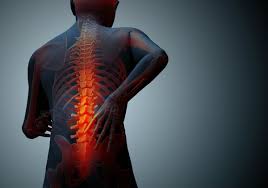 If you’ve injured your back recently playing sports (or doing something else), you might need a chiropractor. While finding one isn’t necessarily difficult, there are actually a few key things you need to remember when looking for the best option for you. In this article, we’re going to look at them.
If you’ve injured your back recently playing sports (or doing something else), you might need a chiropractor. While finding one isn’t necessarily difficult, there are actually a few key things you need to remember when looking for the best option for you. In this article, we’re going to look at them.
1. Do they have special experience in sports injuries?
First things first — you’ll want one who’s got specific experience treating sports-related injuries. Many chiropractors will have worked with sports teams in the past, so you might be able to find a recommendation if you ask your teammates or coaches.
2. What are their general qualifications?
Depending on your location, a chiropractor could have a wide range of different qualifications and certificates. Make sure you’ve checked them all fully before agreeing to treatment.
3. How long have they been practicing?
Are they a recently qualified chiropractor or do they have years of experience? This might be something you should consider, although even newly qualified chiropractors can still be good enough for the job. Read the rest of this entry →
Tags: back injury
Category
Health & Fitness, Sports Medicine
Posted on
June 22, 2018 by
Joe Fleming
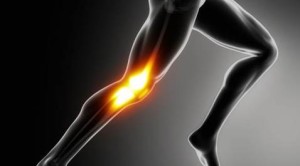 Anterior cruciate ligament (ACL) injuries are some of the most common injuries that athletes experience. Even professional athletes like women’s soccer champion Alex Morgan and Broncos cornerback Chris Harris, Jr. have struggled to recover from torn ACLs.
Anterior cruciate ligament (ACL) injuries are some of the most common injuries that athletes experience. Even professional athletes like women’s soccer champion Alex Morgan and Broncos cornerback Chris Harris, Jr. have struggled to recover from torn ACLs.
Whether you’re a recreational athlete or someone whose hoping to go pro, it pays to know how to prevent and treat an ACL injury. Read on to learn more about this injury and what you can do to avoid being sidelined by it.
What is an ACL Injury?
The anterior cruciate ligament is a major stabilizing and supporting ligament in the knee. It’s responsible for connecting the femur (thigh bone) and tibia (shin bone). The ligament is located in the front of the knee, right above the top of the shin bone and behind the patella (kneecap).
An ACL injury is technically a type of sprain. As with other types of sprains, there are grades of a sprained knee that determine how serious the injury is.
ACL injuries can be broken down into three different grades:
-
Grade 1 — 10 percent or less of the ligament fibers are torn
-
Grade 2 — 11-90 percent of the ligament fibers are torn
-
Grade 3 — more than 90 percent of the ligament fibers are torn and the ligament has completely ruptured
Almost any athlete can suffer from an ACL injury, but athletes who do a lot of jumping or have to stop and/or change directions suddenly are more likely to experience damage to their ACL. Basketball players, soccer players, tennis players, downhill skiers, volleyball players, and gymnasts tend to experience the greatest number of ACL injuries.
Symptoms of an ACL Injury
An ACL injury is typically characterized by a loud “popping” sound or sensation in the knee. Many people also experience swelling, instability, loss of range of motion, and pain when trying to bear weight. Read the rest of this entry →
Tags: ACL injuriesSports Medicine
Category
Health & Fitness, Sports Medicine
Posted on
June 14, 2018 by
Joe Fleming
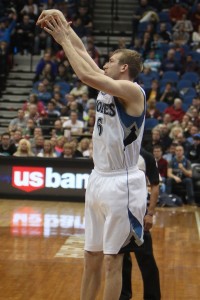
Injuries hampered Robbie Hummel as he played in only 98 games over two NBA seasons.
Approximately 25 percent of all sports injuries involve the hand or wrist, and basketball players are particularly susceptible.
Former Minnesota Timberwolves small forward Robbie Hummel and Cavaliers forward Kevin Love are two of the many professional basketball players who have experienced hand injuries in their careers.
Whether you’re an aspiring professional or strictly a recreational player, it’s important to know how to protect your hands and wrists.
Read on to learn some important tips and tricks that can help players of all ages and skill levels prevent hand and wrist injuries.
Common Hand and Wrist Injuries in Basketball Players
The following are some of the most common hand and wrist injuries that basketball players deal with:
-
Jammed fingers — this is most common hand injury to occur in basketball. The finger gets “jammed” when the ball hits the tip of the finger instead of the palm of the hand. Finger jams can lead to more serious injuries, like sprains of the finger ligaments, dislocations, or fractures.
-
Wrist sprains — these occur when a ligament gets stretched or torn, usually as a result of the wrist being forcefully bent, or if the player falls down onto an outstretched hand. When the ligament is just stretched, it is considered a mild sprain. More severe sprains occur when the ligament is partially or totally torn.
-
Wrist fractures — wrist fractures occur when one or more of the bones in the wrist is broken. Forceful bending can cause fractures, as can falling onto an outstretched hand.
-
Finger/hand fractures — the bones in the fingers and hands are also susceptible to fractures. Even small breaks can totally put the hand out of commission and make simple tasks incredibly painful and difficult. Finger and hand fractures often occur when the ball is caught, when a player runs into another player, or during falls. Read the rest of this entry →
Tags: Basketball injuriesRobbie Hummel
Category
Basketball, Health & Fitness, Sports Medicine
 Sports provide numerous benefits, from teamwork to dedication to improving fitness. They can also, however, be dangerous. It is important to understand how to protect yourself from the dangers of sports and how to prevent injuries. If injuries do occur, knowing how best to treat them is the key to a quick recovery.
Sports provide numerous benefits, from teamwork to dedication to improving fitness. They can also, however, be dangerous. It is important to understand how to protect yourself from the dangers of sports and how to prevent injuries. If injuries do occur, knowing how best to treat them is the key to a quick recovery.



